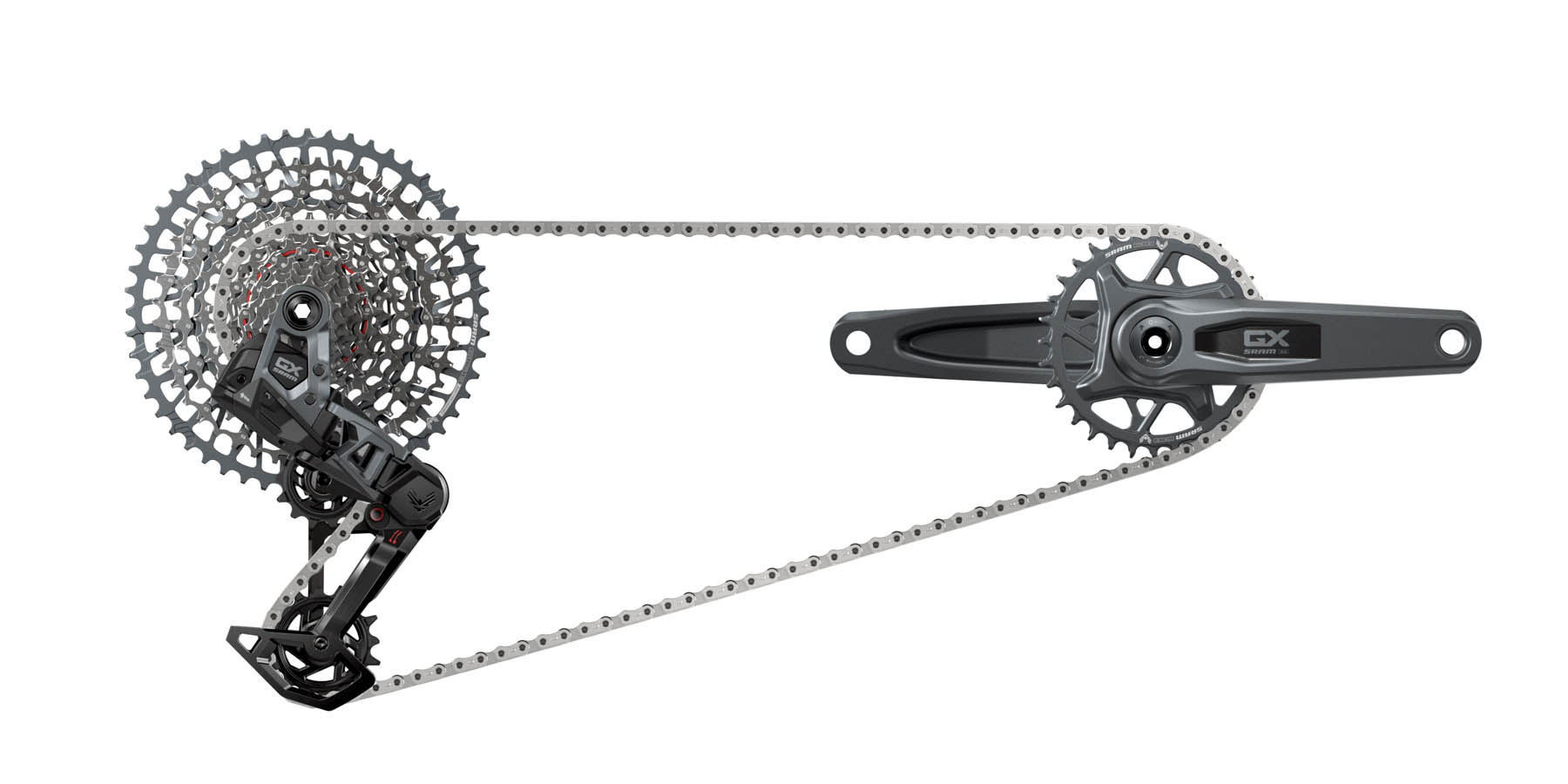
Intro
It’s no great surprise that SRAM has followed up the launch of their Transmission with a trickle-down GX version, but it’s come sooner than one might have expected. And SRAM has already found quite a bit to update beyond just going to simpler manufacturing techniques and less exotic materials to save cost, with the biggest changes coming to the derailleur. So how exactly does the new GX Transmission differ from the higher-end versions with which SRAM launched the system?
If you aren’t up to speed on the Transmission in general, you should first check out our First Look and Flash Review of the XX SL, XX, and X0 versions that SRAM first launched. Here, we’re going to focus on what makes the new GX system different, rather than covering everything from square one.
[And a quick note on specs: we list measured weights for parts we’ve been able to get our hands on at this point, and stated weights elsewhere, with clear indications of which are which. And all Euro / GBP prices listed include VAT.]
GX T-Type Derailleur
- MSRP: $400 / €480 / £430 (Battery not included)
- Stated Weight: n/a
- Blister’s Measured Weight: 491 g (including battery)

The most surprising thing about the new GX Transmission is that the derailleur has gotten such a notable redesign as compared to the XX SL, XX, and X0 versions. It uses the same Full Mount design to attach to a UDH-compatible frame and is still only available in an AXS wireless electronic version (folks who were hoping for a cable-actuated Transmission, sorry). But it’s gotten a substantial change to the packaging of the derailleur, most obviously in the movement of the battery from the back of the derailleur to the top. SRAM says that the repositioning of the battery better protects it from potential impacts, and means that it’s less prone to rattling loose and developing a sloppy connection as the interface wears over time. To further help out on that front, the battery latch is now replaceable without the need for tools or any real disassembly of the derailleur. Despite its repositioning on the derailleur, the battery is still a standard AXS affair — the same as both the higher-end T-Type derailleurs and prior-generation AXS ones.
The GX T-Type derailleur is also highly modular, with a number of components that are replaceable, should they get damaged. The entire cage assembly (which includes the clutch mechanism) is replaceable tool-free, the same as the other T-Type derailleurs, and the outer link and protective skidplate on the parallelogram can readily be replaced, as can both halves of the Full Mount frame interface. The inner cage plate is now made of steel for greater durability at the expense of a few grams, and you can swap in other cage versions onto the GX derailleur (and vice versa). Despite the changes to materials and design, our measured weight for the GX derailleur is only 16 grams more than that of the X0 version.
Controllers

The GX Transmission uses the same two options for a controller pod as the other Transmission versions, with the more basic “Pod Controller” getting an overall similar design as the higher-end “Pod Ultimate” one, just without the swappable buttons of the Ultimate. Both can be used with either a discrete “Infinity Clamp” mount that attaches to the handlebar directly, or with a “Bridge Clamp” that mounts to a Matchmaker-X-compatible brake lever. And as with the higher-end Transmission derailleurs, the GX T-Type derailleur is compatible with prior-generation Eagle AXS controllers if you’d prefer to use one of those.
GX T-Type Cassette
- MSRP: $250 / €300 / £270
- Stated Weight: n/a
- Blister’s Measured Weight: 447 g
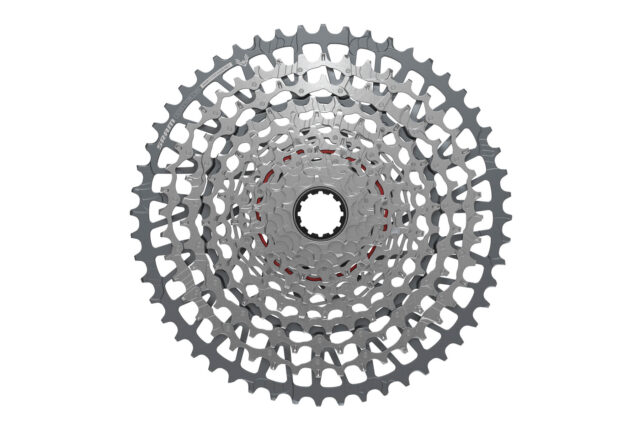
As with earlier versions of SRAM’s groupsets, the GX T-Type cassette differs from the higher-end versions primarily in its materials and construction, with the higher-end versions using more exotic constructions to save weight and potentially improve long-term durability. The GX T-Type cassette uses the same 10–52 tooth gear range with identical steps between gears as the higher-end Transmission casettes (which have been smoothed out as compared to prior-generation 52t Eagle cassettes, with a smaller jump between first and second gears in particular). The largest cog is made from aluminum, with the remainder made from steel with a shiny nickel-plated finish. Second, third, and fourth gears are riveted to the 52-tooth aluminum cog, and gears five through nine are riveted to the next largest gear in the cassette. Gears nine through twelve are a one-piece “mini-cluster.”
Forgoing the fancier machined “X-Dome” construction of the higher-end cassettes adds a bit of weight (66 grams as compared to the X0 version) but also reduces the cost dramatically ($250 vs. $400 for the X0 one). The GX cassette uses the same 55 mm chainline as the higher-end versions and also uses the “X-Sync” narrow-wide tooth profile of the other T-Type cassettes, which necessitates the use of a T-Type chain (more on the GX chain in a minute). And as with the other T-Type cassettes, the GX one uses the same XD freehub driver standard that SRAM has been using for quite some time now.
GX T-Type Crankset
- MSRP (E-bike version): $140 / €170 / £150 (w/o chainring)
- MSRP (Standard version): $200 / €240 / £215 (includes chainring + bash guards)
- Stated Weight: n/a
- Blister’s Measured Weight: 733 g (170 mm crank arms and spindle, 32t chainring, 2x bash guards)
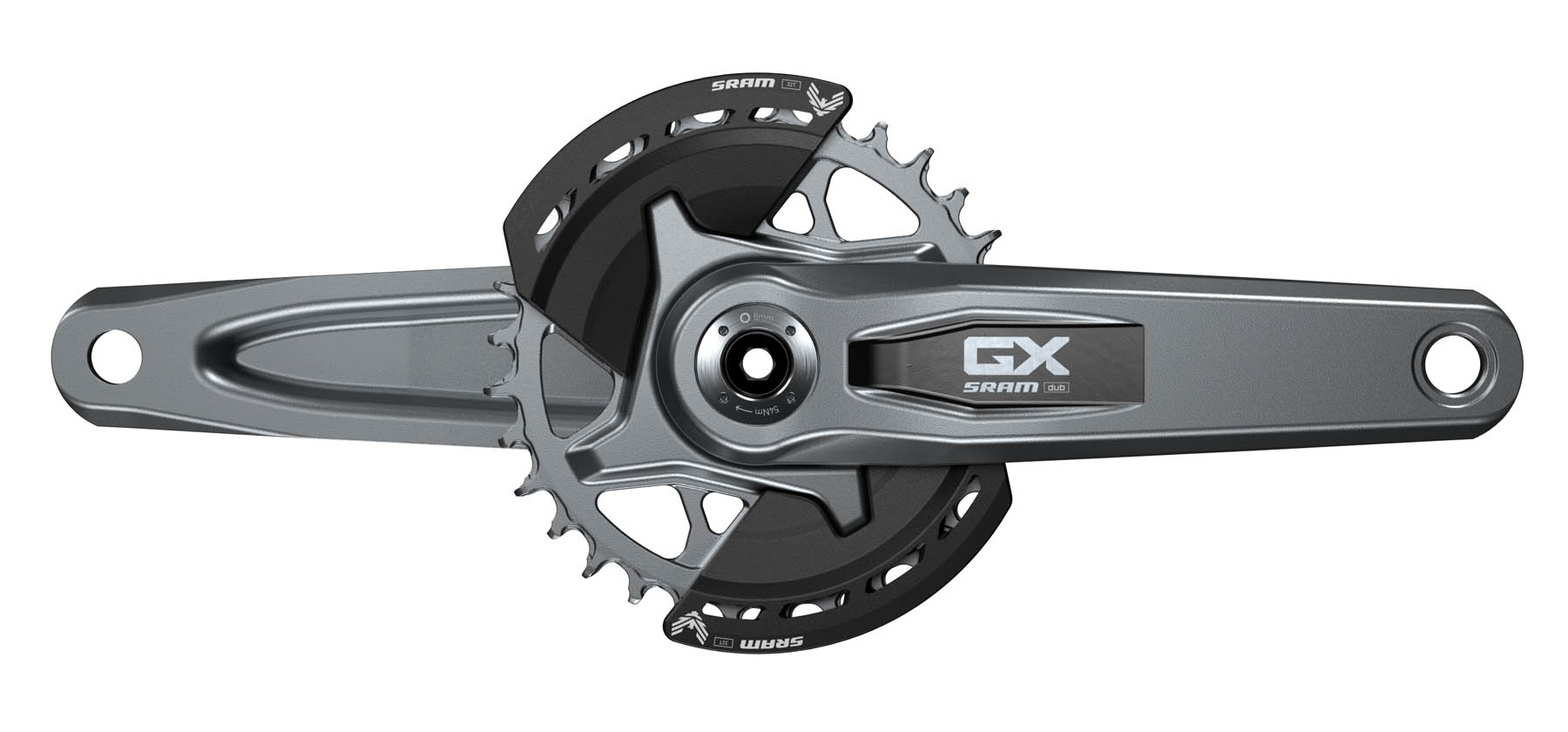
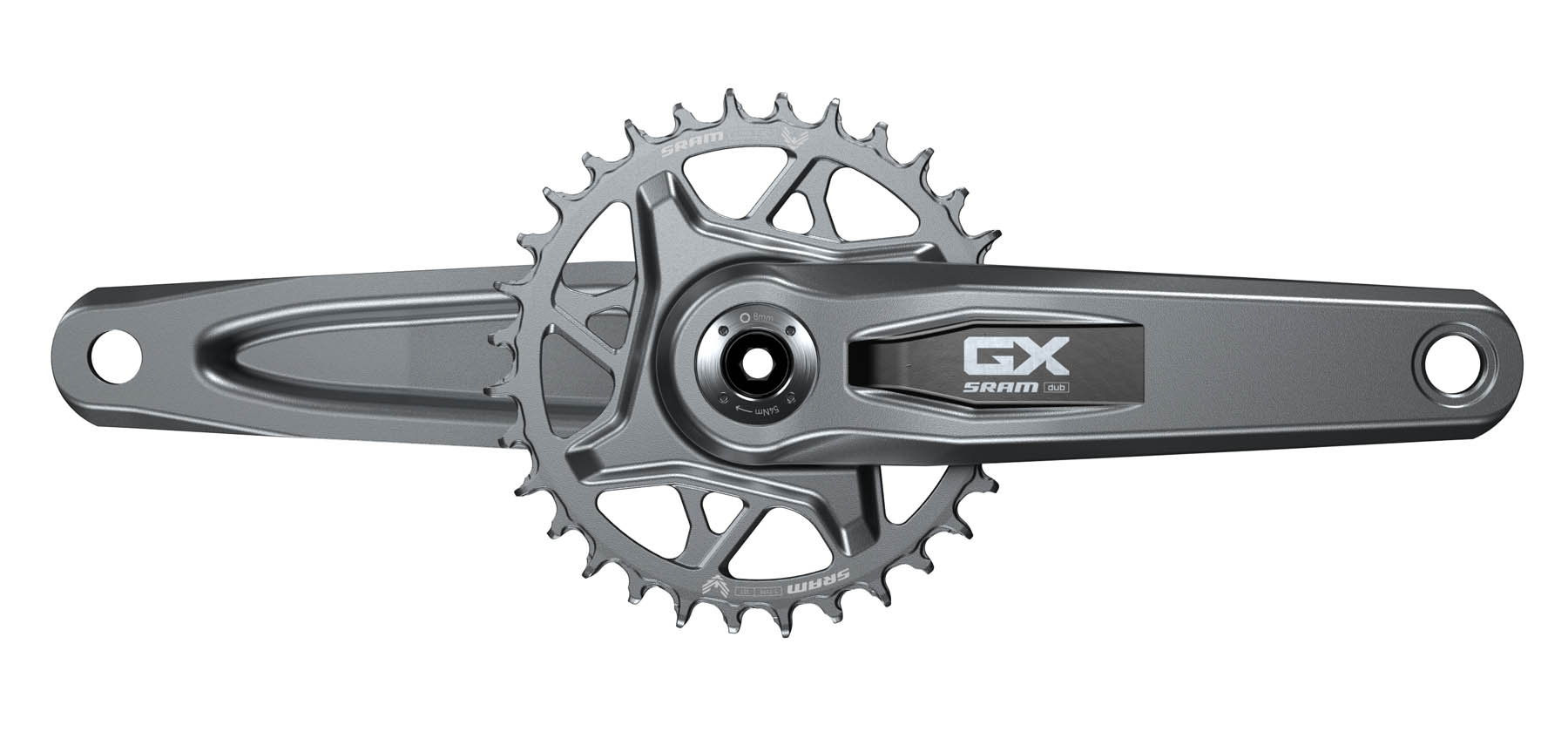
The GX T-Type crankset is made from aluminum and shares all its compatibility details with its fancier counterparts — a DUB wide spindle for a 55 mm chainline and an eight-bolt direct mount chainring being the key points — just without the neat looking hole in the crank arms that the X0 version gets. As with the X0 and XX cranks, the GX crank has optional quarter-coverage bash guards that mount directly to the chainring to protect it in one or both of the cranks’ flat orientations. But unlike the higher-end T-Type cranks, the GX version doesn’t have an option for a power meter — if you want to add that functionality, you’ll need to step up to at least the X0 crank.
Despite the less-exotic construction and lower price, the GX crank isn’t all that much heavier than the X0 one (though the X0 one definitely looks much cooler). Our measured weights for the two actually have the GX one being a few grams lighter, though it’s not quite an apples-to-apples comparison since the X0 crank that we weighed featured the optional power meter, including the AAA battery that powers it. SRAM doesn’t publish a listed weight for either the GX crankset or for the X0 crankset with the power meter; their listed weight for the X0 crankset without the power meter is 65 grams lighter than our measured weight for an otherwise identical crank with it. It seems fair to assume that the X0 crank without the power meter should be a few grams lighter than the GX one, but it looks like the margin is going to be pretty small.
The GX T-Type crankset is available in 165, 170, and 175 mm lengths with 30, 32, or 34 tooth chainrings. An E-bike version is also available in 160, 165, and 170 mm lengths for ISIS splined drive systems. In contrast to the X0 E-bike crankset (which forgoes the cutout of its non-motorized counterpart), the GX E-bike crankset looks pretty much the same as the standard version.
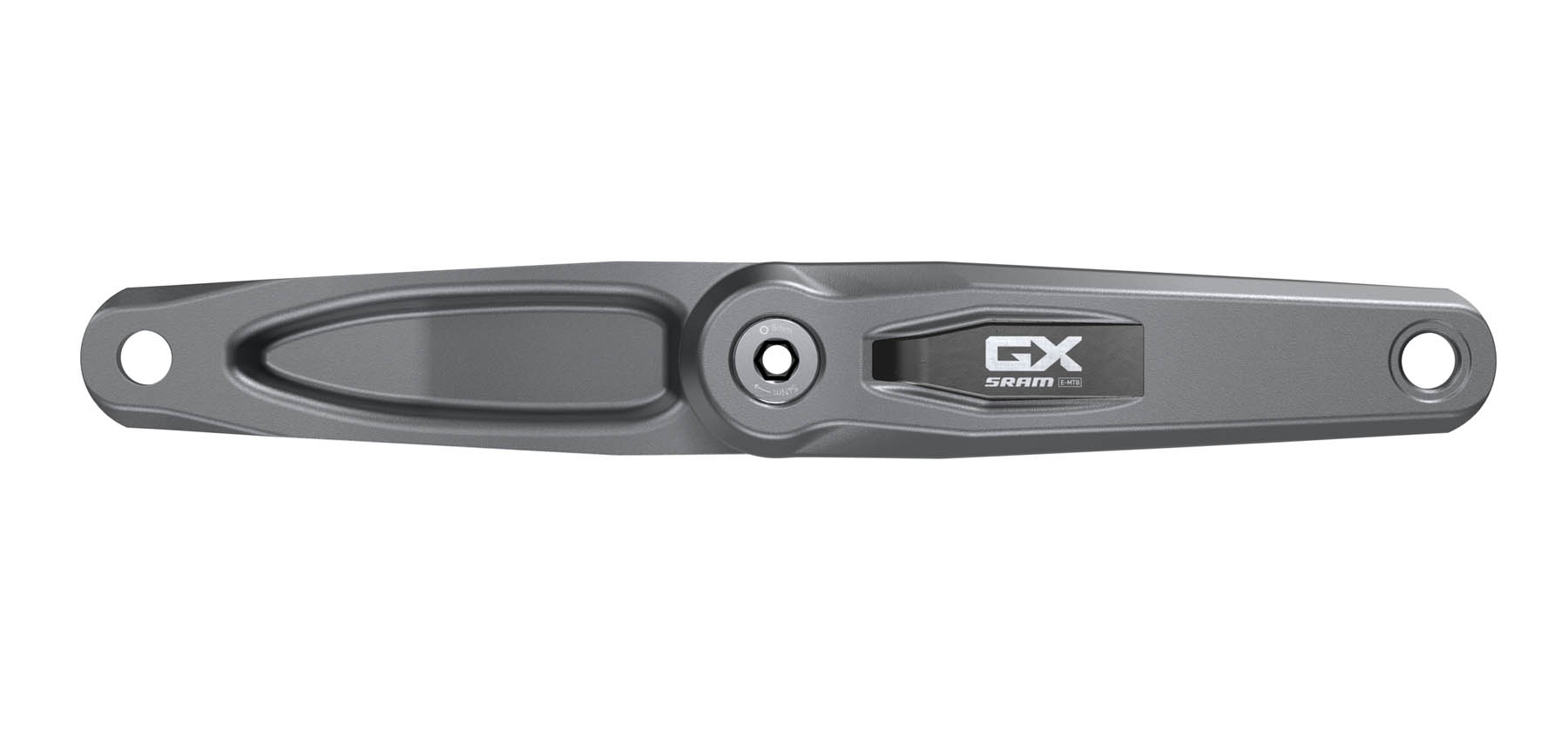
GX T-Type Chain
- MSRP: $50 / €60 / £55
- Stated Weight: n/a
- Blister’s Measured Weight: 285 g

As with the other versions of the Transmission, the GX tier uses a T-Type chain that gets SRAM’s Flat Top design (which they say makes for stronger links), and the new GX version brings that same design to a much more affordable package.
There’s no real weight penalty for the GX chain as compared to the X0 version (both use solid pins and are rated for E-MTB use) but the GX chain forgoes the fancy black PVD coating of the X0 version. We’ve found SRAM’s non-T-Type GX chains to wear notably faster than the X01 versions, so it’ll be interesting to see if the same is true for the T-Type ones. Though, given that the GX T-Type chain costs half what the X0 one does, it could probably be forgiven for being a bit less hard-wearing.
Groupsets

As with the higher-end Transmission variants, the GX one is available as a groupset if you want to buy the full package, rather than mixing and matching between tiers or otherwise piecing the kit together. The non-E-bike version is offered with your choice of crank arm length with a 32-tooth chainring, only; the E-bike one can be had with 160 mm arms and a 36-tooth chainring in Bosch and Brose versions (including crank arms), or with a 104 mm BCD chainring and no crank arms for compatibility with other motor systems. All of the full groupsets include the derailleur battery and charger, as well as the standard Pod controller. Pricing is as follows:
- GX E-MTB Groupset (104 mm BCD version, w/o crank arms): $949 / €1,150 / £1,015
- GX E-MTB Groupset (Bosch and Brose versions): $1,049 / €1,250 / £1,125
- GX Groupset (non-motorized): $1,099 / €1,300 / £1,180
Installation & Setup
The installation procedure for the GX Transmission is identical to that of the earlier iterations. It differs substantially from the requirements for a conventional drivetrain — our earlier First Look has a much more detailed explanation — but is impressively streamlined, and doesn’t require any manual adjustment of derailleur limit or B-tension screws and the like. Folks installing a Transmission for the first time will want to read the instructions and take care to follow them, but it’s extremely quick and easy once you know the routine.
Compatibility
All the compatibility details of the new GX Transmission are the same as its higher-end brethren — the key points being that it requires a frame with a UDH derailleur hanger and that the T-Type ecosystem’s components are mostly not cross-compatible with older Eagle groupsets. You can, however, still mix and match between different tiers of Transmission parts to your heart’s content (e.g., you can run an XX cassette with a GX derailleur, X0 chain, and XX SL crankset, or whatever other combination you can think of). Again, check out our original First Look on the Transmission for a more complete rundown.
Brakes
Once again in keeping with the earlier Transmission launch, SRAM has released a new line of Stealth brakes to go with the GX Transmission. The new “Bronze” tier offerings get the same redesigned lever arrangement with the hoses routed along the handlebar as the other Stealth brakes, and come in the same Code, Level 4-Piston, and Level 2-Piston variants, just with fewer features, a less fancy construction, and a correspondingly more affordable price tag.
Both Level brakes share a lever assembly, paired with different calipers; the Code gets a beefier lever assembly and a bigger four-piston caliper. All of the Bronze brakes use a stamped aluminum lever blade (as compared to a forged aluminum one on the “Silver” versions) and use bushings for the lever pivot (in place of cartridge bearings), with a tool-free reach adjuster.
Code Bronze Stealth Brakes
- MSRP: $185 / €220 / £200 per brake
- Stated Weight: n/a
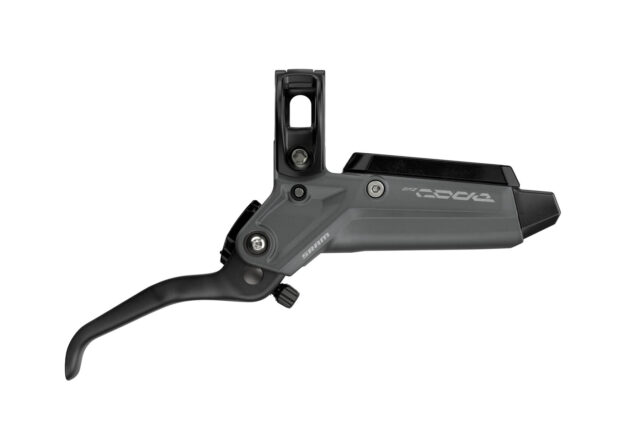
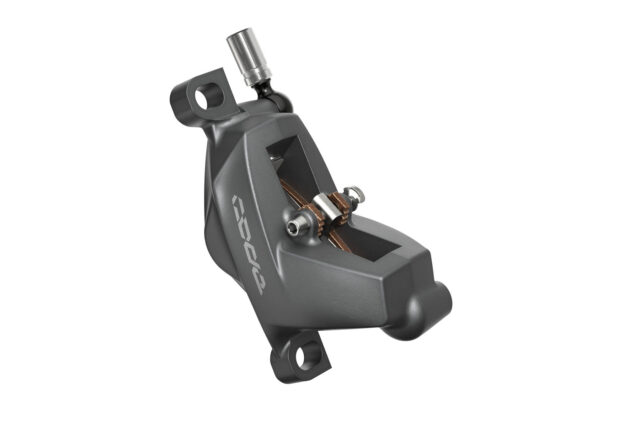
As with the higher-end Code Stealth brakes, the new Code Bronze Stealth uses the same caliper that SRAM has been using for quite some time now (in a new gray finish), with the functional changes coming at the lever end. In addition to the construction changes described above, the Code Bronze Stealth lever loses the contact point adjuster from the higher-end versions.
Interestingly, the Code Bronze Stealth lever maintains the “SwingLink” leverage-altering cam from the higher-end Silver and Ultimate level brakes, making it more similar (on paper, anyway) to the OE-only Code RS brake in SRAM’s older, non-Stealth lineup (instead of the base-model Code R). The Code Bronze Stealth still uses DOT fluid, the same Code pad shape that’s been around for ages, and SRAM’s typical Matchmaker X bar clamp. Sintered metallic pads come standard.
Level Brakes
It’s mostly a similar story with the new Level brakes. The Level Bronze Stealth 4-Piston uses what appears to be the same caliper as the older G2 R (again with a new finish), paired to the new Level Bronze Stealth lever assembly. Interestingly, all three Level 2-Piston brakes use different calipers (albeit with the same pad shape), with the Level Bronze Stealth 2-Piston using a version that gets SRAM’s older threaded bleed fitting rather than the Bleeding Edge one used on the other Stealth brakes.
The Level Bronze Stealth brakes also forgo the banjo fitting at the caliper for a fixed-angle inline fitting, which might make for slightly awkward cable routing on certain bikes with an unusual caliper orientation (e.g., ones that put the caliper between the chainstay and seatstay) but it shouldn’t be a big deal in most cases. Both versions come with organic pads as standard, and use DOT fluid.
Level Bronze Stealth 4-Piston Brakes
- MSRP: $165 / €200 / £175 per brake
- Stated Weight: n/a
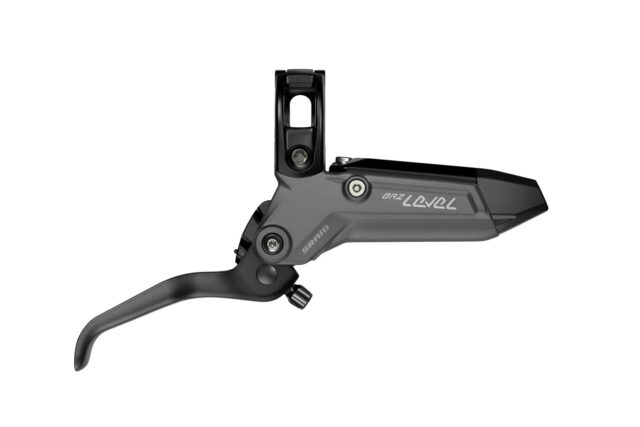

Level Bronze Stealth 2-Piston Brakes
- MSRP: $108 / €130 / £115 per brake
- Stated Weight: n/a

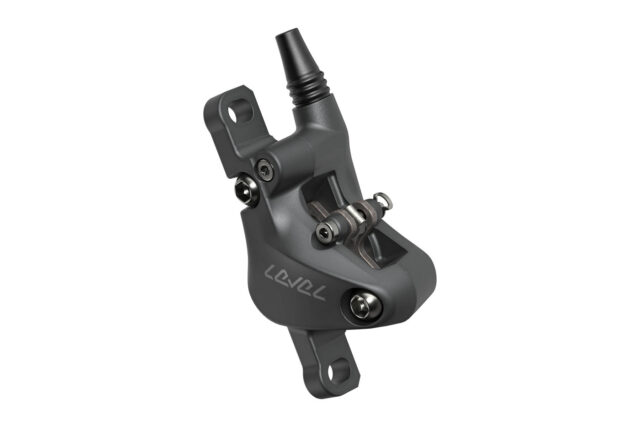
Some Questions / Things We’re Curious About
(1) The GX Transmission is substantially more affordable than the X0 version, and the weight differences are surprisingly modest. So how does the on-trail performance compare between the two?
(2) And what about long-term durability? Working really well out of the box is one thing (and the modularity and reparability of the derailleur are welcome), but how does the GX Transmission hold up after long-term use?
Bottom Line (For Now)
Flash Review
Blister Members can read our Flash Review of the new GX Eagle Transmission for our initial on-trail impressions. Become a Blister Member now to check out this and all of our Flash Reviews, plus get exclusive deals and discounts on gear, and personalized gear recommendations from us.
